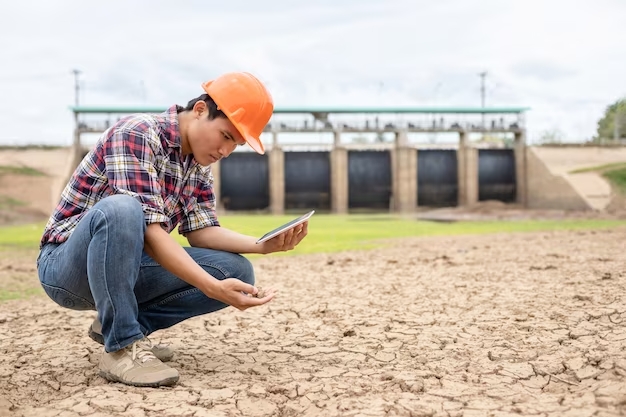Understanding Soil Types and Construction Implications
Drop a Line if you have a Question!
Are you planning a construction project?
Understanding soil types and their construction implications is crucial. Soil analysis plays a vital role in determining the right foundation design and construction techniques.
Different soil types possess unique properties that directly affect the success of your project. Expansive soils, for example, present challenges and require special considerations.
In this article, we will delve into the importance of soil analysis, the various soil types, and the construction techniques best suited for each.

Importance of Soil Analysis in Construction
Soil analysis is essential in construction because it helps identify potential risks and determine the appropriate foundation design.
When you embark on a construction project, it is crucial to understand the characteristics of the soil on your site. By conducting soil analysis, you can assess the soil’s composition, moisture content, and load-bearing capacity.
This information is vital in determining the type of foundation that will provide adequate support for your structure. Without proper soil analysis, you run the risk of building on unstable ground, which could lead to costly and dangerous structural issues in the future.
Additionally, soil analysis can help identify potential hazards such as expansive soils or underground water sources, allowing you to take necessary precautions to mitigate these risks.
Different Types of Soil and Their Properties
When it comes to building, you’ll want to know the properties of different soil types. Understanding the characteristics of soil can help you make informed decisions during construction.
Clay soil, for example, has tiny particles that hold water and can expand when wet, causing it to become unstable.
Sandy soil, on the other hand, has larger particles that drain water quickly but can lack stability.
If you encounter loam soil, consider yourself lucky, as it is a balanced mix of sand, silt, and clay, making it ideal for construction.
Peat soil, however, should be avoided due to its high organic content and poor load-bearing capacity.
Impact of Soil Types on Foundation Design
If you encounter loam soil, you’re in luck because it is an ideal soil type for construction due to its balanced mix of sand, silt, and clay.
Loam soil has excellent drainage properties, allowing water to flow through it easily without causing excessive saturation. This is important for foundation design as it helps prevent water damage and instability.
The balanced composition of loam soil also provides good load-bearing capacity, meaning it can support the weight of a building effectively. Additionally, loam soil is relatively easy to work with during construction, making it a preferred choice for builders.
Its fertile nature also makes it suitable for landscaping and gardening purposes. Overall, if you come across loam soil, consider yourself fortunate as it offers numerous advantages for construction projects.
Construction Techniques for Different Soil Types
To effectively build on different soil types, you’ll need to adapt your construction techniques accordingly. The type of soil in an area can greatly impact the stability and longevity of a structure.
For example, if you’re building on clay soil, which is known for its high moisture content and poor drainage, you’ll need to take extra precautions. One technique is to install a deep foundation, such as piles or caissons, to reach more stable soil layers.
On the other hand, if you’re building on sandy soil, which is prone to erosion and shifting, you may need to use techniques like soil stabilization or ground improvement methods.
Challenges and Considerations for Building on Expansive Soils
Building on expansive soils can present significant challenges due to their tendency to swell and shrink with changes in moisture content. When you decide to construct on such soils, it is crucial to understand the potential risks and take appropriate measures to mitigate them.
One of the key considerations is the foundation design. You should opt for deep foundations, such as piles or piers, to reach a more stable layer of soil beneath the expansive soil.
Additionally, proper drainage systems are essential to control the moisture levels around the foundation and prevent excessive swelling. It is also important to monitor and manage the moisture content of the soil surrounding the building. This can be achieved by implementing effective grading and landscaping techniques.
Conclusion
So now you know the importance of soil analysis in construction. Understanding the different types of soil and their properties is crucial for designing a strong foundation.
Construction techniques need to be adapted based on the soil type to ensure stability and prevent future issues. Building on expansive soils can be challenging, but with careful considerations and proper techniques, it can be done successfully.
Remember, soil plays a vital role in construction, and by understanding it, you can ensure the longevity and safety of your building project.

Have a question?
Become a























